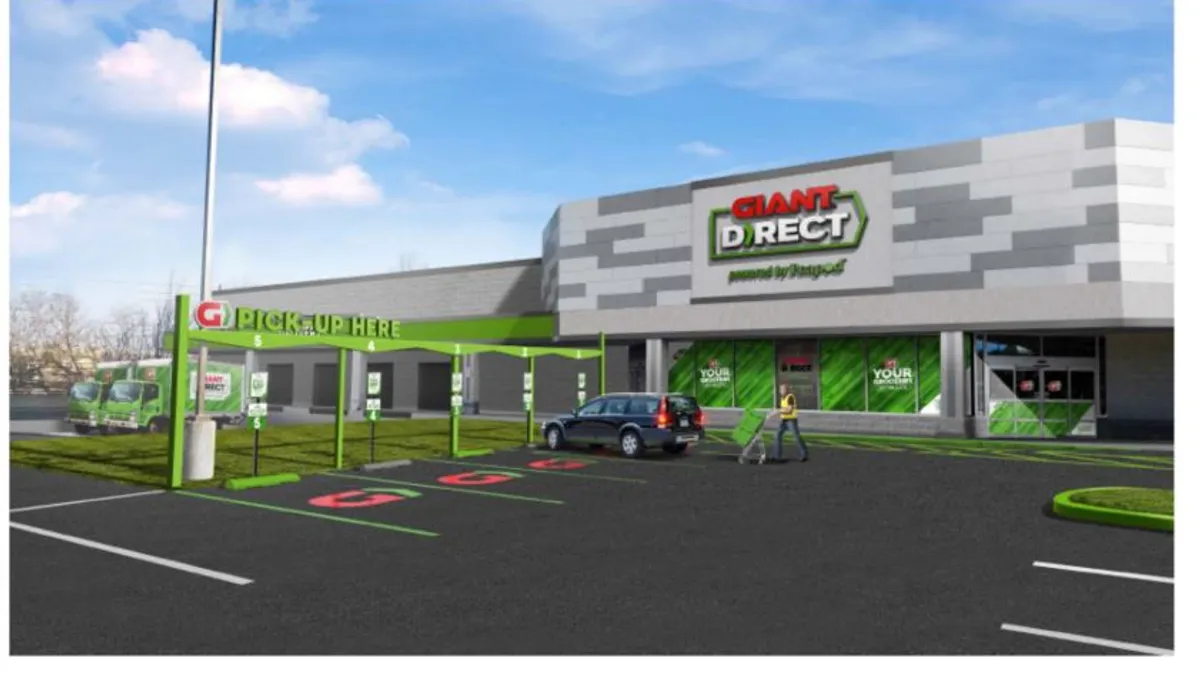Dive Brief:
- Grocery group Ahold Delhaize USA will invest $480 million, including leases, over the next three years to integrate the supply chains of its six grocery banners, moving toward a self-distribution model, according to a press release issued Tuesday.
- The plan includes the acquisition of three new warehouses in Pennsylvania and New York from Ahold's current distribution partner C&S Wholesale Grocers and leasing two additional facilities in Pennsylvania and Connecticut with the aim of reaching 22 facilities by 2023 (up from 15 today). The facilities will support 2,000 Food Lion, Giant Food, Giant/Martin's, Hannaford, Peapod and Stop & Shop locations. Two of the seven new warehouses in the plan will be fully-automated frozen warehouses in the Northeast and Midwest.
- "Through this initiative, we will modernize our supply chain distribution, transportation and procurement through a fully-integrated, self-distribution model, that will be managed by our companies directly and locally," Ahold Delhaize USA CEO Kevin Holt said in a statement, adding efficiency and better product availability are the end goals.
Dive Insight:
The supply chain shifts underway at Ahold represent the benefits and efficiencies the merger of Ahold and Delhaize promised from the start three years ago, Chris Lewis, executive vice president of supply chain for Retail Business Services (RBS), told Supply Chain Dive. RBS is Ahold's in-house tech shop, charged with addressing the banners' challenges and concerns with technology pertaining to supply chain, retail experience and IT.
The plan is also the culmination of RBS' work, which began in 2018, when the grocery group decided it needed an arbiter of technology to work apart from any single banner to source and build supply chain and technology solutions that could serve all the brands.
The result is a supply chain strategy that looks more like Delhaize's mostly in-sourced pre-merger supply chain rather than Ahold's mostly outsourced model.
Not only will a self-distribution model allow the group to hold onto more margin, but it will also give the company free rein to implement technologies to make its supply chain faster and more responsive. The release calls out an integrated transportation management system and end-to-end forecasting and replenishment technology.
The automated warehouses are also an example of this. Lewis' team is working with a yet-unnamed technology partner from outside the grocery space to build an Ahold-specific tech solution.
The more unified operations will be due in part to digitized routing and the shared facilities but also what Lewis called "strong symmetry" in procurement technology and practices — especially benefiting fresh produce.
Though omnichannel operations are not an initial focus of the supply chain revamp, Lewis said this work will eventually benefit customer-facing services as well. The new warehouses are strategically located near densely populated areas to support services like delivery or pickup should they need to.
The bulk of the $480 million outlay will take place in 2020 — $410 million in incremental expense and $70 million in leases. The company expects to see operating margin benefits beginning in 2022, according to a press release.
The end result will be a lower cost to serve the brands along with greater negotiating power when procuring everything from product to freight, said Lewis. The top-line benefit to the sweeping changes will roll out through the banners over time, he said. Eventually, the company expects to see $100 million in annual savings at the end of the transition period, according to the release.













